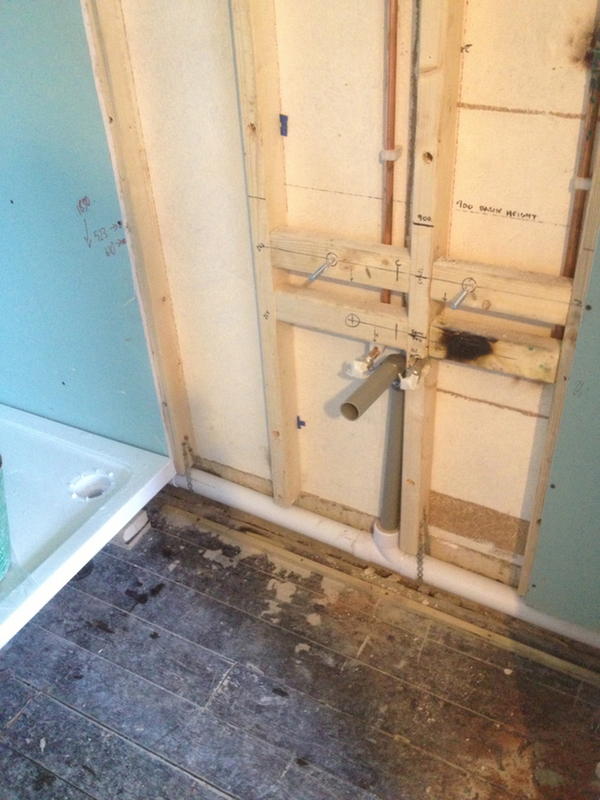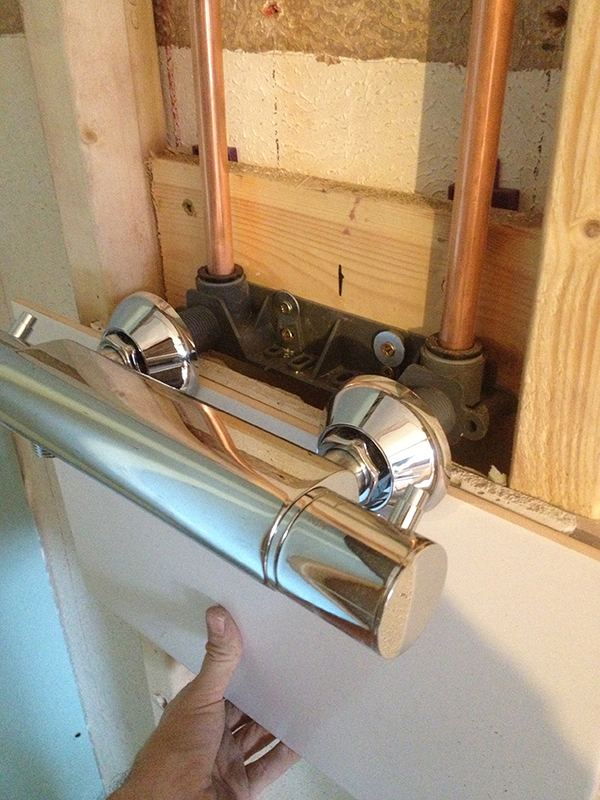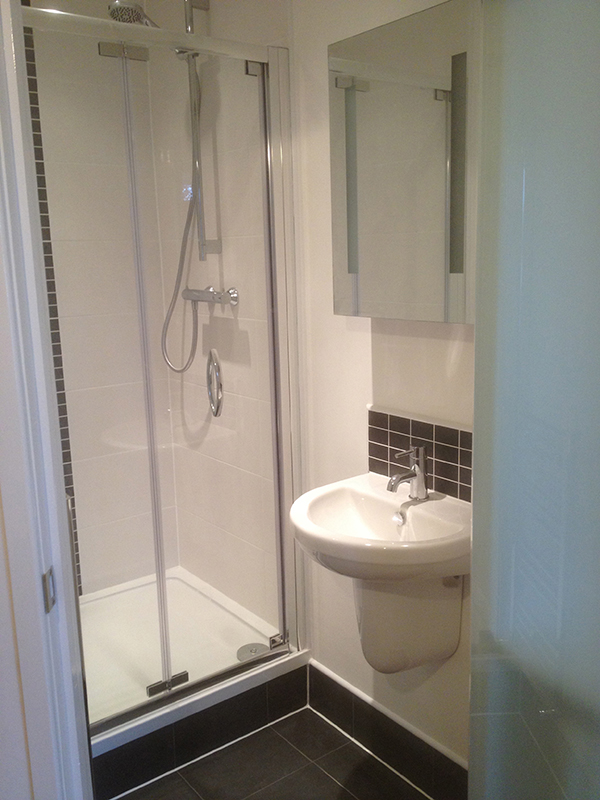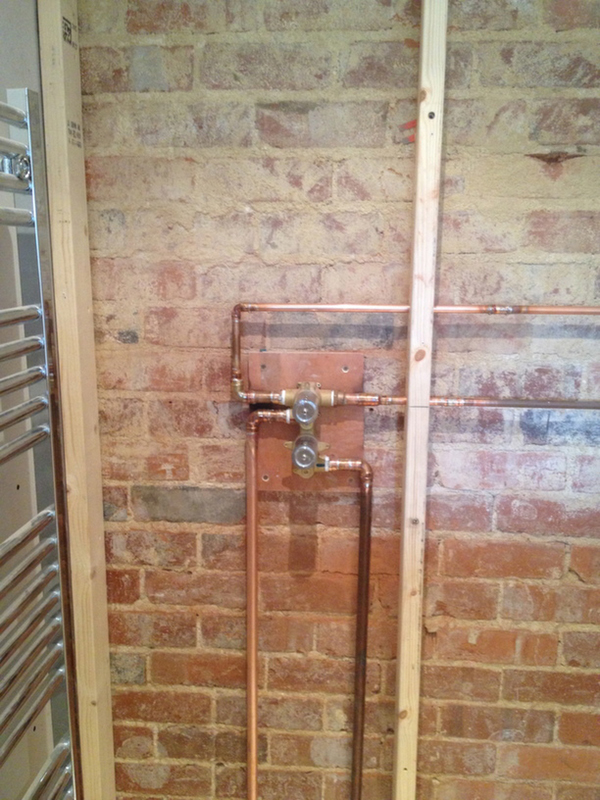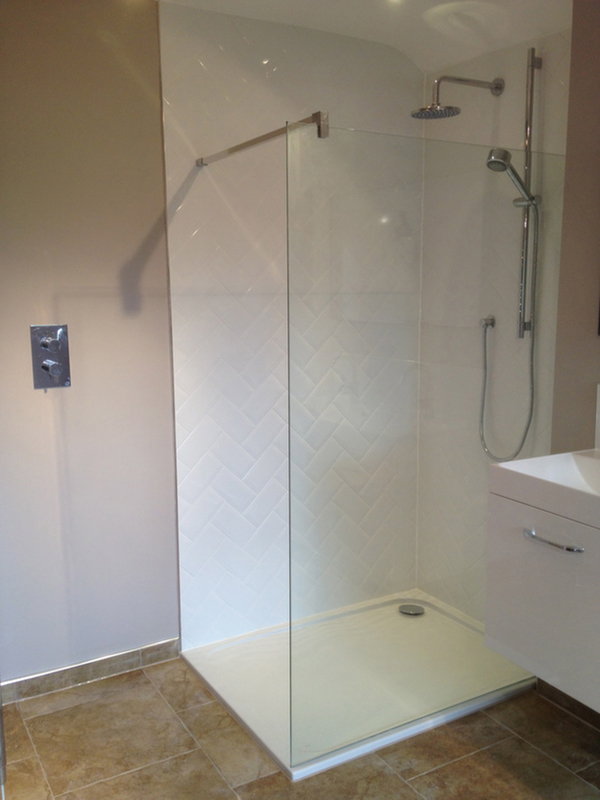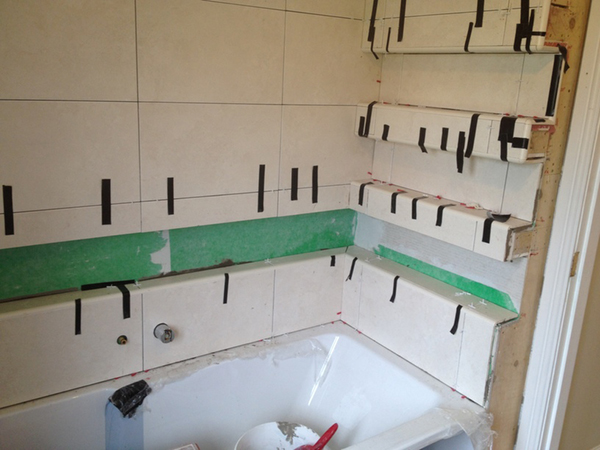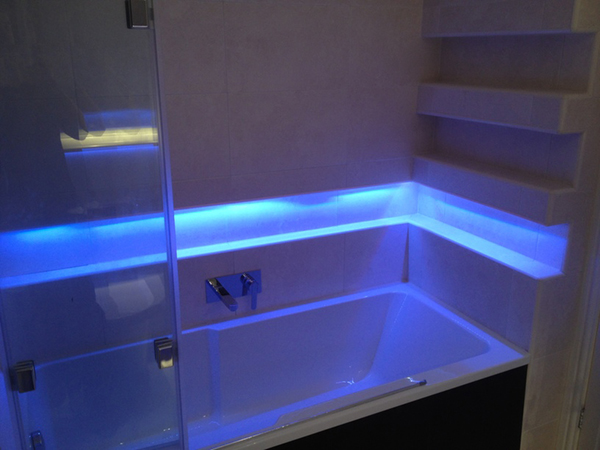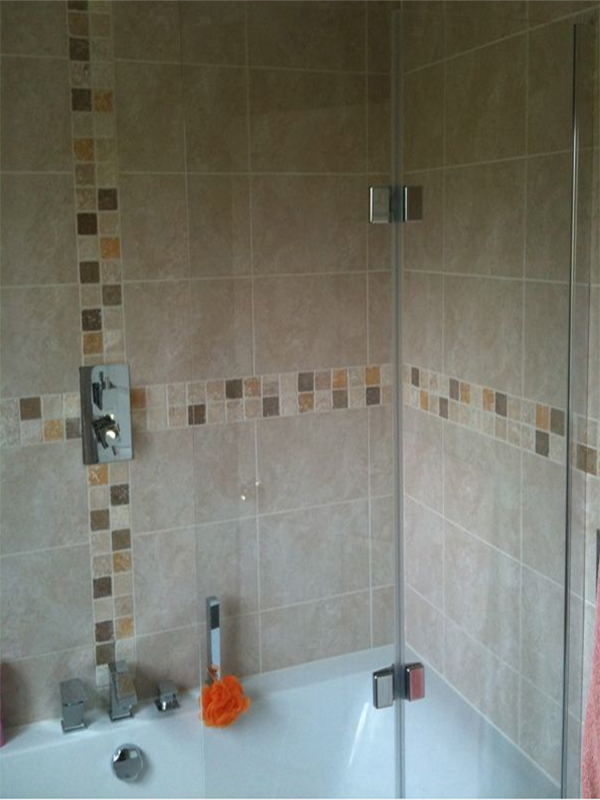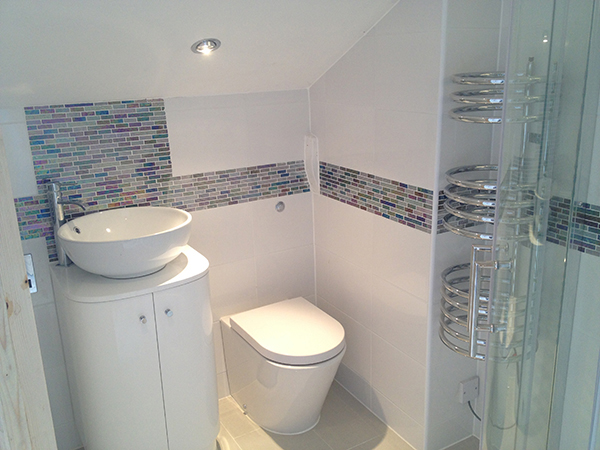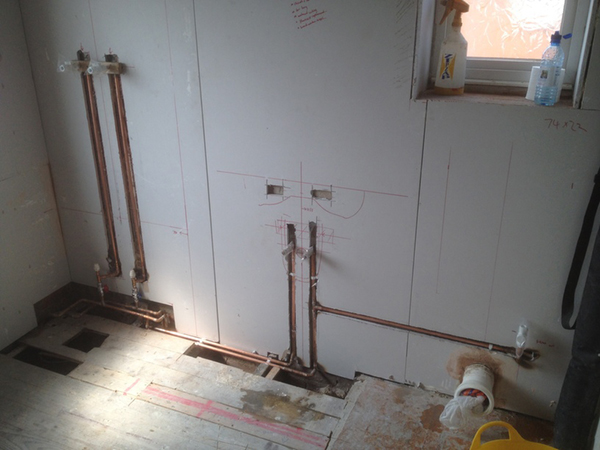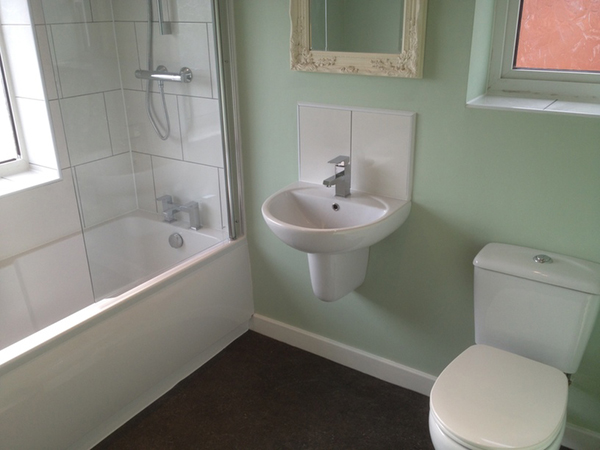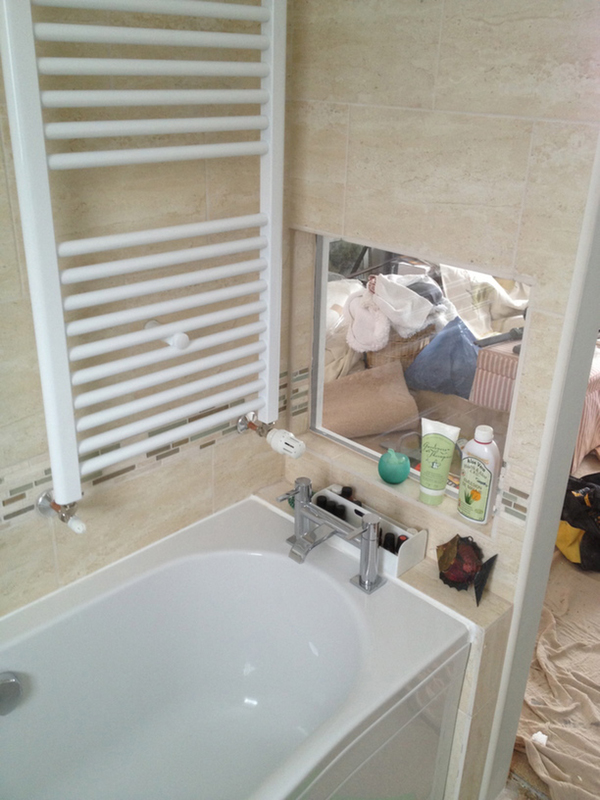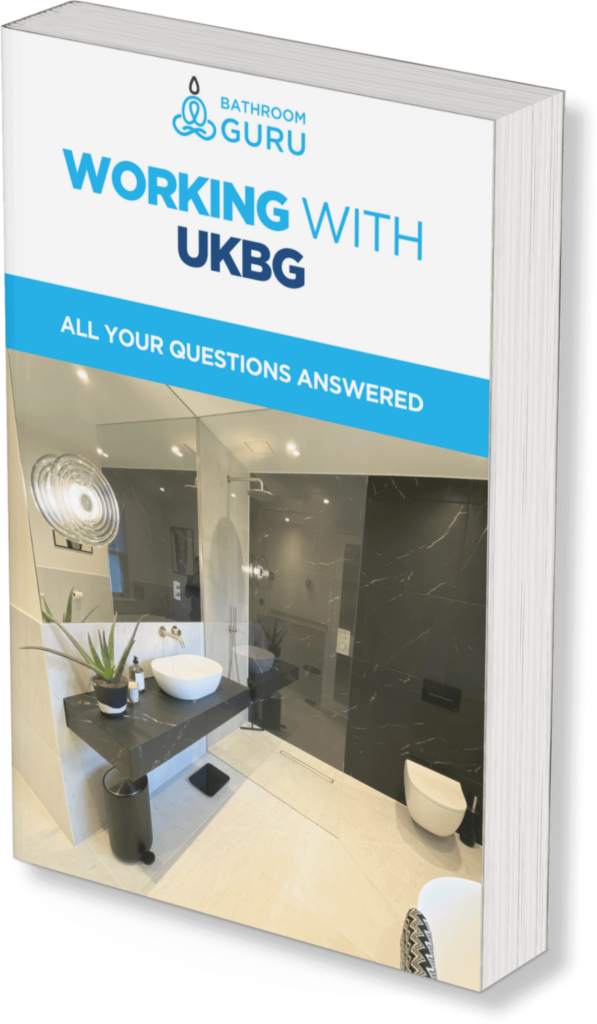This article highlights the importance of tight coordination between the trades in a typical bathroom installation project. All work is carried out by ukbathroomguru.com in Bardsey, Leeds.
Introduction
When installing a new bathroom, often many trades are required:
- Labourers and /or a plumber to remove the old suite and strip out all the old tiles, floor coverings etc.
- Plumber to fit pipework for the new bathroom suite and reposition / fit suite items as required
- Tiler to prepare & tile the walls and/or floor
- Plasterer to skim the ceiling or board out the walls prior to tiling or plastering
- Painter to paint the newly skimmed ceiling with anti-mould bathroom paint
- Joiner to re-hinge doors or build stud work e.g. if adding a new en suite to a bedroom
- Electrician to fit underfloor heating, ceiling spotlights, an extractor fan or a shaver point
- A general builder if any structural work is being done such as knocking a separate WC & bathroom into one, putting in an RSJ or fitting a new UPVC window.
Most importantly they all need someone (the lynchpin) in charge to pull the whole project together!
Approaches
1. DIY Option (Do all the work yourself)
2. Customer lynchpin option – The customer sources all the trades independently and then tries to make them all work together towards a common goal
3. Tunkey option – The customer hires a turnkey bathroom installation company (such as ukbathroomguru.com) to run the project from start to finish, with all design & planning, materials, labour, waste disposal, job co-ordination etc taken care of by project manager.
The third (turnkey option) is how I do things and an overview of the process can be found here.
The importance of tight coordination between the trades
Whatever your particular approach, coordinating the various trades involved in a bathroom installation project is very important in terms of:
- the amount of time the job will take overall
- the quality of the finish achieved & therefore its longevity & practicality
- cost
A poorly managed project will take much longer than a tightly run job.
Typical bathroom installations by ukbathroomguru take 1.5 weeks from start to finish, but it is not uncommon for people trying to do it by DIY to take many months as they stretch their resources (in terms of time, skill, knowledge of local suppliers, wives’ patience etc) to the limit.
Managing trade crossover points is very important to ensure a quality finish (see pictures below) and this can only be done when the person managing the project:
- knows the job & process inside out in order to achieve the best results
- can communicate (and enforce) their wishes consistently & effectively to the various trades involved
Customers with limited knowledge of either of these things will find it difficult in these circumstances to deliver a high quality project.
Examples
In this installation, the joinery work was very tightly coordinated with the plumbing & tiling work to achieve the following:
- A shower tray that was tightly fitted into the newly built en suite walls to ensure a watertight installation
- Perfectly level and flat walls (perfect for tiling) that allowed pipework to be run within the wall as shown to & from the pre-determined desired location of the shower & basin.
- Minimum use of plasterboard by spacing studs to suit standard-sized wall boards
- A strongly secured shower bracket that was positioned by the plumber correctly so that it was square to the joiners newly studded out wall, and protruded out enough to account for the tiler tiles.
- A strong fixing for the wall-hung basin by ensuring studs were placed at pre-determined locations so that the basin fixings could be secured into them.
If all these jobs had been done by individual tradesmen done in isolation (with no regard for the other trades) the following mistakes could very easily have occurred at the ‘trade crossover points’ unless otherwise identified and managed. The joiner could have built stud work for a 1000mm wide tray but assumed that 9mm plasterboard was being used rather than 12.5mm so the tray would not fit in between the 2 walls.
Conversely, he may have thought that a 15mm board was being used and that would result in large gaps down the side of the tray, making future leaks more likely and giving a poorer finish. The plumber could have set the shower bracket too far back from the finished wall surface and only discovered this at 2nd fix (once the walls were boarded & tiled) when he wouldn’t be able to screw the shower valve onto the bracket and the wall would have to be partly ripped down to rectify this mistake – massive cost & time implications!
PS Also liability issues here as each trade would argue that they have done their job correctly (but only when considered individually) and that is the crucial difference.
The joiner could have just fit vertical stud work for the wall behind the basin with no provisions made for the wall-hung items. Therefore, when the plumber came to fix the wall-hung basin then it would just be fitted into plasterboard rather than into timber, resulting in a much weaker fixing and more liable to pull away from the wall if someone leans or falls on it.
Again, the plumber could argue that his job is to plumb the item in which he has done to the best of his ability (given the remit of his work) but the end result is a poorly fixed basin liable to fall off the wall.
Similarly, the joiner could argue that he has studded out the walls as required and unless otherwise instructed, it is not his job to 2nd guess where sanitary items such as basins will be fitted.
Another potential problem I see when looking at the pictures above is that if a joiner was employed to fit skirting boards to the bottom of the wall behind the basin, then he would be quite likely to pierce the shower waste pipe with a screw unless he knew the position of the pipe behind the finished wall surface prior to his commencement of the work – a small item very easy to overlook in the installation process, especially if the joiner has not been on the job from the start.
All these problems can be avoided with good project management by an experienced individual and a team used to working together.
This shower valve, fitted by a plumber, was fitted to the brick wall behind it in such a way that it ended up being square to the wall that was studded out around it, whilst protruding out the correct distance to function correctly once the plasterboard and skim coat were applied.
It was also fitted in such a position as to allow the user to turn the shower on without having to enter the shower enclosure 1st (thus saving themselves a wet arm) and this required careful co-ordination between the trades in terms of laying out the space initially.
This example (above & below) required very tight coordination between the plumber, electrician, joiner and tiler to achieve the effect the client was after.
Studwork was erected on 2 walls bordering the bath to enable a small recess and some shelving to be fitted.
The electrician worked closely with the joiner and tiler to ensure that the light chosen gave the required effect, whilst fitting in with the joinery & tiling constraints.
Also, the joiner made & positioned the plywood unit at the bottom of the bath (which was later tanked & tiled) in such a way as to ensure that the eventual grout lines would match up around the room.
This meant that the tiler and the plumber had to work out the eventual position of every fitting at the outset, and then work with the joiner to deliver this outcome based on the tilers’ tile layout determined in advance of boarding the walls or even fitting the bath which was quite a challenge.
The end result is stunning though as I’m sure you’ll agree.
Similarly in this example, the position of the shower valve within the centre of the vertical and horizontal intersection of the border tile made it necessary to plan the tile layout before all of the 1st fix plumbing work (which is the opposite to how you would normally approach such things).
This ensured that the shower valve was in the position required by the user over the centre of the bath, whilst also ensuring the tile layout remained balanced with no awkward cuts in the corners for example.
In this en suite above, the plumbing work and tiling were tightly co-ordinated to ensure that when the basin was fitted into its intended location at 2nd fix stage, that it perfectly aligned with the glass mosaic tiles on the wall behind it – This accuracy and tight co-ordination between the 2 trades also allowed us to use regular tiles behind the unit (rather than mosaics), saving the customer a fair amount of time and money in the process.
Trades such as plumbing also need careful coordination between themselves I.e. at the 1st & 2nd fix stage, and a good plumber will always think about the 2nd fix at the 1st fix stage.
In the picture above you can see (from left to right) the shower valve feeds, bath feeds, basin feeds and toilet feed as well as the toilet waste.
These have all been positioned so that they will fit correctly at 2nd fix stage:
The shower pipes have been brought out of the wall above the bath so that the shower valve will be at an appropriate height, aligned centrally over the bath directly above the bath taps.
The hot & cold feeds for the basin will come out of the wall at the correct height so that when the wall-hung basin & semi pedestal are mounted to the wall, all of the pipework will be hidden but remain accessible for future maintenance.
Also, the toilet feed will connect straight up, once the toilet is sat on the finished vinyl floor in this instance.
In this instance, a window was added to the wall between an en suite and its adjoining master bedroom so that the customer could lie in their bath and look out through the window, and through their bedroom window beyond it at the fields outside.
Positioning the opening for this window at the very beginning of the project made it necessary to accurately predict where the customer’s head would be when eventually laid in the bath.
If this position were to be incorrectly guessed, then its incorrect position would only become apparent after the bath was installed and the wall was built – then rectifying the mistake would be more costly and would cause big delays.
Summary
So you see, it is important to know what you want & to co-ordinate tradesmen effectively to deliver the result you expect.
By reading this article hopefully, you will have started to think a bit more like a project manager with an appreciation for how effective management can decrease fitting times, and improve the quality of the results achieved whilst saving you money by not having to have work re-done due to common oversights that can be predicted and planned for.
Thanks for reading, please get in touch for a free site survey if you don’t fancy the headache of all this and we can do it for you!
Chris

